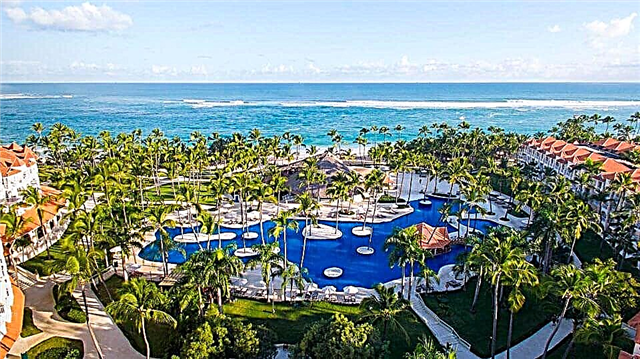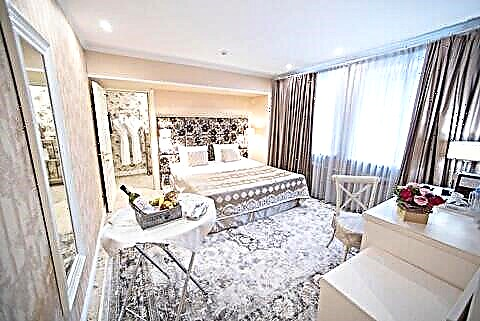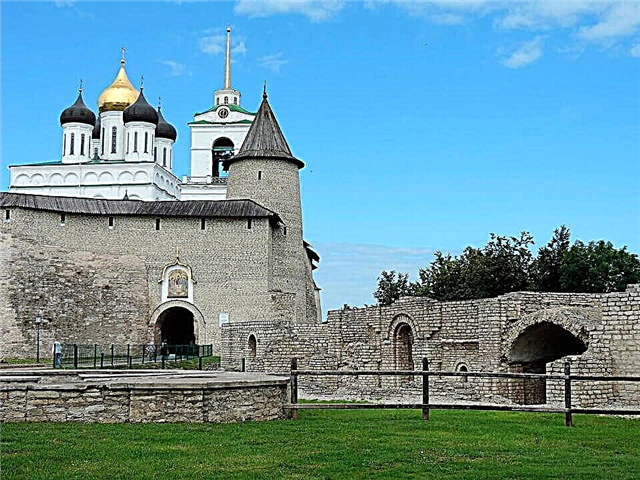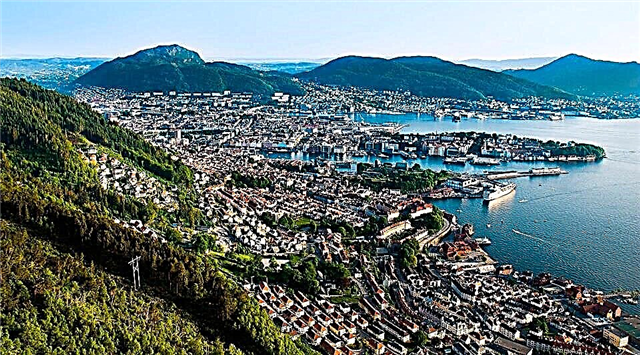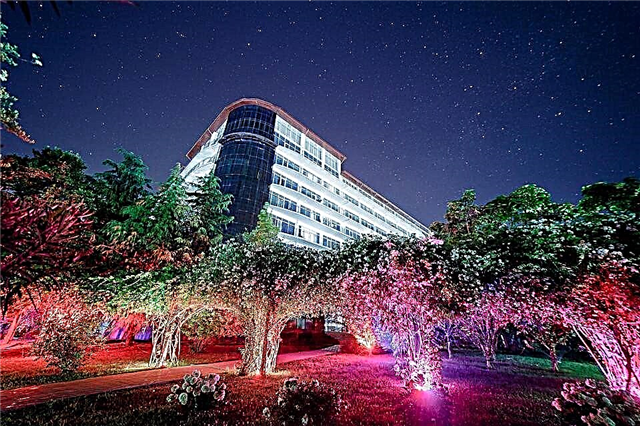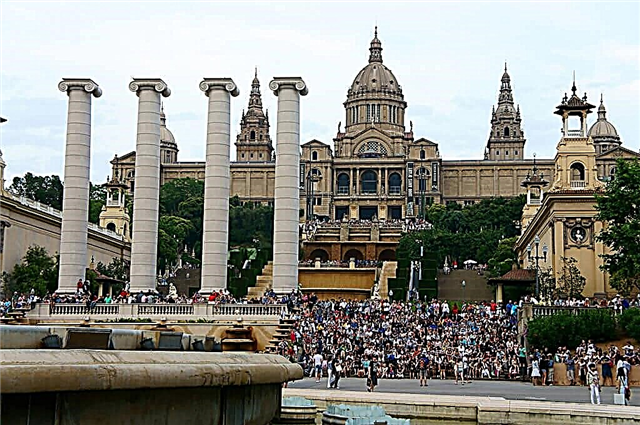The National Art Museum of Catalonia is located at the foot of Montjuïc in central Barcelona. It occupies a building with an area of 30 thousand square meters, which looks like an old royal palace. In fact, this is a modern building, which was erected for the 1929-1930 World Exhibition. as a pavilion to showcase advances in electrification. A magnificent building, one of the most beautiful in Barcelona, built in the style of the classical Spanish Renaissance, was named: the National Palace.
History

After the Expo, it housed the Museum of Catalan Art. For the 1992 Olympics, it was decided to restore the palace and move the Museum of Modern Art here. As a result of the merger, the National Art Museum of Catalonia was formed. Its departments were replenished with exhibits from other museums, as well as received by will or as a gift. The reconstruction and final arrangement, which began in 1990, was completed on December 16, 2004 and is the date of the official opening of the museum. Currently, the exposition includes more than 236 thousand items.
Collections
The MNAC (Museu Nacional de Art de Catalunya) collections cover works created over almost a millennium by masters from Catalonia, other regions of Spain, France, Italy and many European countries. The main collection consists of works of different styles: Romanesque, Gothic, Renaissance, Baroque.

The nature of the exhibited works is varied. They are represented by objects of painting, sculpture, wood and bone carvings, metal, ceramics, engravings, coins, medals. A unique collection of contemporary art of the 19th - 20th centuries, collected from the canvases of famous artists
Romanesque exposition
The Romanesque exposition, finally formed by 1995, is rightfully the pride of the museum. It is considered one of the largest and oldest in the world. For the works of the Romanesque (Roman) style, corresponding to the XI-XIII centuries, austerity and nobility are characteristic. These are mainly wall paintings that adorned cathedrals and chapels of the Iberian Peninsula. Many frescoes and wall paintings were cut out entirely using the original technique and removed from the places of creation, where their preservation was threatened by bad weather and the disastrous state of the temples.

Particularly noteworthy is such a unique masterpiece as the 12th century frescoes from the Church of San Clement in Taul depicting Christ - Pantokrator, Our Lady, the apostles, for which a separate room is allocated. They amaze with their special expressive style and brightness of colors. Fresco painting is complemented by a rich collection of paintings and panel paintings. Unique, dating back to the XI-XII centuries, sculptures made of stone and wood on Christian themes, gold and silver church items, cult objects for the liturgy, altars.
Gothic exposition
The Gothic style is later than the Romanesque. It includes works of art from the middle of the XII-XV centuries, not only by Spanish, but by French, Italian masters. An interesting altarpiece by the Valencian artist Gonzalo Perez, made in 1415. The central theme is scenes from the life and miracles of the holy Martyr Barbara. The work is a painting on wood with tempera, with a characteristic brightness, vividness of colors. The scenes are framed with gold plates and decorated with intricate ornaments.
Of the late Gothic works, the painting of the court Catalan artist Luis Dalmau "Our Lady of the Counselors" stands out in 1443. This painting marks the transition to a three-dimensional depiction of figures, space, and details of nature. Another master of spatial depth and volume is the Italian painter Anton Francesco de Shegia. His work is represented by painting a wooden canvas, presumably the lid of a chest. The theme - seven virtues - is revealed in brightly written compositions dedicated to each of them.

The exposition contains many wooden and stone sculptures, furniture, products with skillful bone carving, stained glass windows, and forged items.
Renaissance and Baroque exposition
The exhibition in the Renaissance and Baroque style was created in 2000 from works donated to the museum by private collectors, especially F. Cambo. It is represented by paintings by Spanish, Flemish, Venetian, Italian masters of the 16th - 18th centuries, in particular such famous artists as Goya, El Greco, Rubens, Velazquez, Titian and others.
This painting is characterized by the creation of voluminous canvases depicting the character, individuality of the characters, the colorfulness and truthfulness of the figures, the contrast of bright images against a dark background. The most famous paintings: "St. Paul" by Diego Velazquez, "Allegory of love. Cupid and Psyche "by Francisco Goya," St. Peter and St. Paul "by El Greco.
Thyssen-Bornemisza collection
The private collection of paintings by Baron Hans Thyssen-Bornemisza is one of the largest in the world. Most of it is on display at the Thyssen-Bornemisza Museum in Madrid. After his death, the Baron's widow, a native of Catalonia, Carmen Cervera donated part of the MNAC collection. These are mainly Italian painting in the style of Venetian Rococo, Renaissance, European Baroque and Dutch landscape painting of the 17th century.
Unique paintings, the golden fund of medieval painting, are distinguished by their rare skill and rich variety. Many of them are written on Catholic themes and call for piety and mercy. Among the most famous canvases it is worth noting: "The Adoration of the Magi" and "St. Jerome in the Desert" by M. Thyssen, "Annunciation" by P. Veronese, "The Virgin and Child" and "Portrait of Antonio Anselmi" by V. Titian, "The Virgin and the Child with St. Elizabeth and St. John "P. Rubens.
Modern Art

The collection of contemporary Catalan art includes a variety of areas of painting, sculpture, arts and crafts, cinema, photography. This is a wide range of pictorial styles of the 19th - 20th centuries, such as: neoclassicism, modernism, avant-garde, cubism, etc.
Barcelona is the capital of modernism. This trend is represented by paintings by Santiago Rusinol, as well as decorative art by Antoni Gaudi and José Maria Jujol. The exhibition includes paintings by such famous painters as: P. Picasso (cubism and surrealism), D. Gonzalez (abstractionism), M. Fortuny (romantic orientalism), J. Miro (abstract art), P. Gargallo (cubism), posters A .Toulouse-Lautrec, sculptures by O. Roden.
Department of Drawings and Prints

Contains an extensive collection of 50 thousand drawings, 70 thousand engravings, more than 1 thousand. posters. These are images of popular artists, illustrations for literary works, cartoons, sketches, sketches, drawings. Their authors are both Spanish and European and North American masters. The collection includes works of the XIX - XX centuries. Among the most famous artists whose works are exhibited are: M. Fortuny, Théophile-Alexander Steinlen, Anthony Clavet, Eugene Samuel Grasse.
Photo collection
The photographic collection numbers over 40 thousand items, covering the 19th - 20th centuries. It shows the progress of photographic art from its beginnings to the present day. Much attention is paid to the fashionable trend of the early XX century - pictorealism, which combines the tendencies of painting and photography. When using this technique, images in a photograph are difficult to distinguish from a painting. Of the modern trends, an interesting section is devoted to photojournalism, which uses photography as a key to understanding the events covered.
Numismatics Department

The numismatic department displays more than 155 thousand coins since the 6th century. BC e. to the present day.In addition, the collection includes medals, chasing, orders, insignia of the 15th – 20th centuries. The Catalan coin collection is especially popular.
Opening hours and ticket prices

Opening hours in winter (October to April):
- Tuesday to Saturday: 10 am - 6 pm;
- on Sundays and public holidays: 10 - 15.
Summer opening hours (May to September):
- Tuesday to Saturday: 10 am - 8 pm;
- on Sundays and public holidays: 10 - 15.

The museum is closed on Mondays. Annual closure: 1st January, 1st May and 25th December. Ticket offices close 30 minutes before the museum closes.
- Full ticket: € 12 (valid for two days)
- Combo ticket: general admission + audio guide: € 14
- To the rooftop observation deck: € 2
- Audio guide: € 4
- Groups, family (2 adults + 1 child), students - 30% discount
Where is it located and how to get there

The National Art Museum of Catalonia is located in the center of Barcelona next to the Plaza de España metro station L1, L3. In addition to the metro, it can be reached by buses: 55, 150, 13, 37
On foot:
- From the Plaza de España along Maria Cristina Avenue to the escalator to the museum.
- From Carrer Lleida to Teatro Merset de Le Flores - walking to the museum
- From Anella Olympica (Olympic Park) - escalator to the museum
In Barcelona, GuruTurizma recommends the following hotels:



